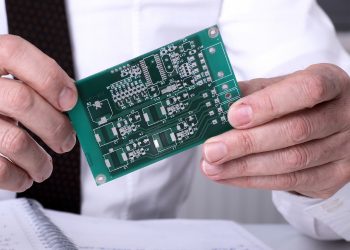Upon the launch of the Galaxy S23 with the Snapdragon processor, there was a sense of excitement and anticipation among consumers. Many enthusiasts hoped that Samsung would embrace the Snapdragon’s support and move away from the Exynos processor.
However, to our dismay, Samsung persisted in equipping their subsequent phone models with the Exynos chipset.
Regrettably, it appears that this trend will continue with their upcoming devices as well. It is worth noting that even the Tensor chip utilized in Google Pixel devices carries the Exynos branding, further emphasizing its prevalence in the mobile industry.
Exynos vs. Snapdragon: A Shift in Strategy

The Exynos processor has a rich history, with Samsung manufacturing its own processors since 2000. It’s worth noting that even the first iPhone featured a Samsung processor. In 2010, Samsung introduced the Exynos line, which has been a prominent player in the market for over a decade. However, despite its longevity, the Exynos processor has faced a significant issue: overheating.
This flaw has attracted criticism from users, particularly in regions where Samsung utilized Exynos chips in their flagship phones, while users in other areas enjoyed the superior Snapdragon chips.
The Snapdragon processor, developed by Qualcomm, has gained a reputation for its exceptional performance, lower heat generation, and improved battery life. Given these advantages, one might wonder why Samsung hasn’t opted for Snapdragon processors instead of continuing with the Exynos line.
Addressing this concern, it is important to highlight a recent development. In the previous year, Samsung took a notable step forward by introducing the Snapdragon 8 Gen 2 processor specifically tailored for their Galaxy devices.
This move was a significant acknowledgment of the inefficiencies of their Exynos processor. The impact on performance was remarkable, receiving positive feedback from users and resulting in substantial sales.
This strategic decision proved pivotal for Samsung, as it signified the realization that the Exynos processor lacked the desired potency. As a result, Samsung has chosen to further collaborate with Snapdragon, leveraging their expertise to enhance the performance and user experience of their devices.
Related Article
- Apple AI Powered Quartz and Its Impact on Future Technology
- Lava’s Resilience and Rise Across Landscapes
Samsung’s Exynos: A Revival Plan

Samsung’s journey with Exynos seemed to be going smoothly, with no intention of abandoning it. However, an unexpected twist occurred. Let me clarify one thing: how does Samsung generate more revenue? Is it primarily through the sale of its mobile phones?
If you believe so, you’re mistaken. Samsung actually earns more by selling its memory chips and processors, which is a significant aspect of their business. While they understand the ongoing importance of the mobile phone industry, they recognize the potential for higher profits in the chip and processor market.
Consequently, Samsung has been prioritizing this area from the very beginning, particularly with a focus on the Exynos processor as an alternative to Snapdragon.
However, the story took a dramatic turn when the Exynos processor fell significantly behind its competitor, Snapdragon. This setback had a profound impact on Samsung’s electronic division, resulting in a staggering 95% reduction in profits—the lowest in the past decade.
Fully aware of the need to rectify this decline, Samsung has responded by increasing its investment in research and development.
The company is now contemplating a renewed focus on processor and memory chip production. In light of this, Samsung is considering resurrecting the Exynos processor.
Related Article
- Why Nothing is Winning in Today’s Fast-Paced World
- IQOO Neo 7: Flagship Killer Smartphone: Unleashing Power
Samsung Dream Team
However, the question remains: will the Exynos processor make a comeback? Here’s an interesting development to consider.
In recent years, Samsung has invested heavily in its processor manufacturing business, particularly within its mobile phone division.
Reports indicate that Samsung has established the Dream Platform 1 team, comprising 1000 employees recruited from prominent companies such as AMD and Apple.
Their goal is to develop a Galaxy-exclusive chip, designed exclusively for Samsung Galaxy smartphones. The primary objective of this team is to deliver this processor to the market by 2025—a processor that can compete not only with Snapdragon but also with Samsung’s main rival, Apple.
Samsung and AMD Partnership
Samsung recognizes that there is no Android device as powerful as Apple’s offerings. To effectively compete with Apple, Samsung understands the importance of developing its own processor.
They have partnered with AMD, a company known for its high-performance computing and graphics solutions. This collaboration marked Samsung’s foray into gaming.
Together, they are developing a new GPU for the Exynos 2500 which is said to be the company’s Dream Team chip.
This GPU will be based on AMD’s Radeon technology, and the focus will be on improving optimization. This means that instead of focusing solely on raw performance, Samsung and AMD are working to ensure that the chip works as efficiently as possible.
Here is a possibility that this technology will be utilized in budget processors as well. Leveraging AMD’s graphics technology could greatly benefit Samsung, as Exynos processors have not been particularly renowned for gaming.
If Samsung can effectively address heating issues and provide impressive gaming graphics, it would bode well for the future of Exynos processors.
Samsung’s Exynos 2500: A Dream Chip
As Samsung prepares its Exynos 2400 for a possible announcement in the near future, A new update claims that the Exynos 2500 features four high-performance Cortex-X cores, making it a lethal combination for the competition.
The Exynos 2500, at its current stage, features four Cortex-X5 cores operating at different clock speeds, the CPU cluster of the Dream Team chipset, stating that one Cortex-X5 will be clocked between 3.20GHz and 3.30GHz, while the remaining three Cortex-X5 cores will run in the 2.30GHz to 2.50GHz range.
The remaining configuration will comprise of Cortex-A730 and Cortex-A520 cores, both of which are unreleased designs from ARM.
There is not a ton of information known about the Exynos 2500 other than Samsung is in the middle of developing a chipset that may help clear the company’s name for coming up with successive disappointing chipset launches. This Dream Team SoC is also rumored to feature Samsung’s custom GPU, which is rumored to be made using IP from AMD, but at this time, we have no information on what it will be called or what its specifications are.
Previous rumors stated that the Exynos 2500 is still two years away, meaning that we will not see it before the Galaxy S25 unveiling. During that time, Qualcomm is said to announce the Snapdragon 8 Gen 4, which will be the first from the company to sport the firm’s in-house Oryon cores that was made possible with the Nuvia acquisition.
From what we have gathered, the Snapdragon 8 Gen 4 touts higher multi-threaded performance than Apple’s M2, so we expect the Exynos 2500 to perform similarly.
Looking at the supposed launch timeline, Samsung could take advantage of its second-generation 3nm GAA process to mass produce this Dream Team chip, but at this time, treat the rumored specifications with a pinch of salt until we have a solid lead in the future.
The Future
But what does the future hold for Samsung’s Dream Chip? Well, it’s still early days, and we’ll have to wait until the Galaxy S25 is released in 2025 to see the chip in action.
However, the partnership between Samsung and AMD, combined with the focus on optimization, suggests that this could be a game-changer for the industry.
Conclusion
So, there you have it. Samsung’s Dream Chip could be the key to the company’s future success in the smartphone market.
It’s an exciting time for tech enthusiasts, and we can’t wait to see what Samsung and AMD have in store for us.
As always, we’ll keep you updated with the latest news and developments. Thanks for watching, and don’t forget to like, share, and subscribe for more tech updates. See you in the Next one!

